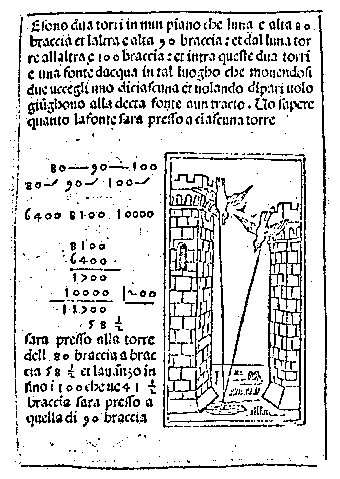Facade Measurement by Trigonometry
Paul Calter,
Professor Emeritus
Vermont Technical College, Randolph
Center, Vermont, USA
 We are all familiar
with the trigonometry textbook problem, the angle of elevation
to the top of a building from a point 200 feet from...Find the
height of the building. Here we describe a trigonometric
method that not only measures heights of points on a building,
but widths and depths of those points. The procedure involves
readings with a theodolite, and computations of the readings by
a computer. The method is suitable for sighting from sloping
ground. It will work with walls that are leaning out of
plumb, have offsets, are curved, or have projecting elements,
like sills or cornices. The method was developed for the purpose
of measuring historic monuments, where the erection of scaffolding
to accomodate hand measuring is often impossible. This method
also provides a low-cost alternative to stereogrammetric procedures,
such as that used to measure Independence Hall in Philadelphia.
We are all familiar
with the trigonometry textbook problem, the angle of elevation
to the top of a building from a point 200 feet from...Find the
height of the building. Here we describe a trigonometric
method that not only measures heights of points on a building,
but widths and depths of those points. The procedure involves
readings with a theodolite, and computations of the readings by
a computer. The method is suitable for sighting from sloping
ground. It will work with walls that are leaning out of
plumb, have offsets, are curved, or have projecting elements,
like sills or cornices. The method was developed for the purpose
of measuring historic monuments, where the erection of scaffolding
to accomodate hand measuring is often impossible. This method
also provides a low-cost alternative to stereogrammetric procedures,
such as that used to measure Independence Hall in Philadelphia.
The Method
- Study of facade and preparation of preliminary
drawings to determine target points.
- Determination of a base line, and establishment
of two theodolite positions.
- Set the theodolite at position A, sight a
point T1 on the wall, and sight a plumb
line over theodolite position B, setting horizontal scale to
zero.
- Sight each target point, recording horizontal
angle and vertical angle.
- Set the theodolite at position B, sight a
point in line T2 vertically with T1,
and measure the vertical distance between them.
- Repeat step 4.
- Enter all measurements into the computer
spreadsheet and print out the x, y and z
coordinate of each target point. Make a final scale drawing.
The method was tested by taking measurements
of the facade of Green Academic Center at Vermont Technical College.
Two equations are used to calculate the y coordinates,
and the comparison of the two results provides a way to control
the accuracy of the method. It appears that, with moderate care,
accuracies within .5% are easily obtained. Theoretically, better
accuracy may be obtained by taking a readings from a third theodolite
setup point.
Order Nexus: Architecture and Mathematics
| abstract
index | Previous abstract | Next abstract | E-mail
Paul Calter | Nexus Network Journal Homepage
|
 We are all familiar
with the trigonometry textbook problem, the angle of elevation
to the top of a building from a point 200 feet from...Find the
height of the building. Here we describe a trigonometric
method that not only measures heights of points on a building,
but widths and depths of those points. The procedure involves
readings with a theodolite, and computations of the readings by
a computer. The method is suitable for sighting from sloping
ground. It will work with walls that are leaning out of
plumb, have offsets, are curved, or have projecting elements,
like sills or cornices. The method was developed for the purpose
of measuring historic monuments, where the erection of scaffolding
to accomodate hand measuring is often impossible. This method
also provides a low-cost alternative to stereogrammetric procedures,
such as that used to measure Independence Hall in Philadelphia.
We are all familiar
with the trigonometry textbook problem, the angle of elevation
to the top of a building from a point 200 feet from...Find the
height of the building. Here we describe a trigonometric
method that not only measures heights of points on a building,
but widths and depths of those points. The procedure involves
readings with a theodolite, and computations of the readings by
a computer. The method is suitable for sighting from sloping
ground. It will work with walls that are leaning out of
plumb, have offsets, are curved, or have projecting elements,
like sills or cornices. The method was developed for the purpose
of measuring historic monuments, where the erection of scaffolding
to accomodate hand measuring is often impossible. This method
also provides a low-cost alternative to stereogrammetric procedures,
such as that used to measure Independence Hall in Philadelphia.